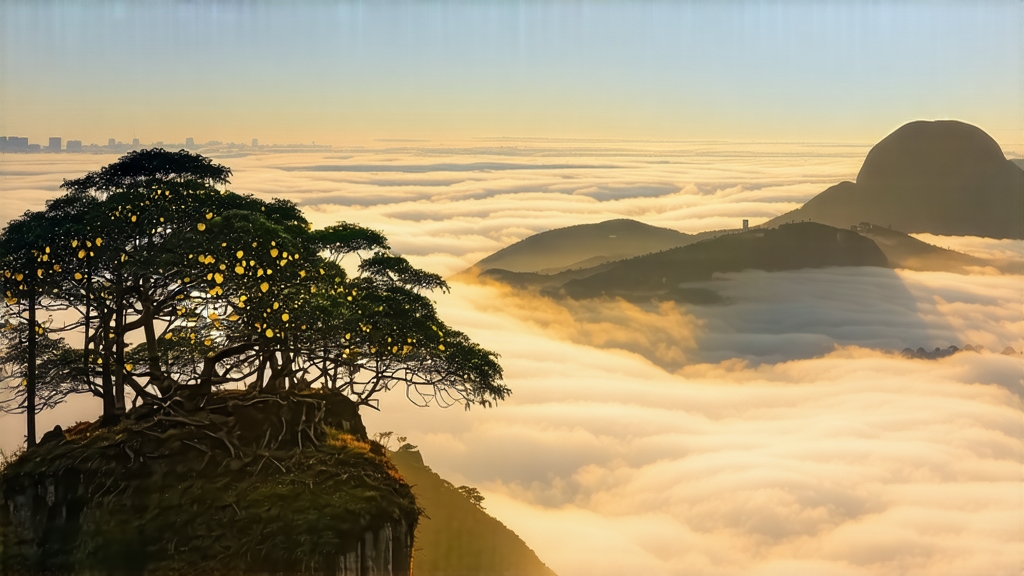
High on the shoulders of Mount Meng, where Sichuan’s lowland humidity collides with the chill air of the Tibetan Plateau, a tea once reserved for emperors still unfurls its buttery-sweet leaves each April. Meng Ding Huang Ya—literally “Yellow Bud from Meng Summit”—is the least-known member of China’s yellow-tea family, yet it carries the most regal pedigree. While green tea dominates export statistics and dark pu-erh fills auction headlines, yellow tea occupies a quiet niche: fewer than two thousand kilograms reach the global market annually, and half of that never leaves the province. To understand why, one must trace the leaf from Tang-dynasty court records to the microscopic enzymatic reactions that turn chlorophyll into liquid marzipan.
Historical scrolls kept at the Ya’an County Archive record the first tribute shipment in 724 CE, when monk-planters presented “eight liang of golden shoots” to Emperor Xuanzong. The mountain’s Buddhist monasteries controlled the gardens; picking began only after the abbot burned incense and recited the Heart Sutra, a ritual meant to remind laborers that tea is medicine, not merchandise. By the Song dynasty the court demanded 500 kilograms a year, forcing monks to invent a slow oxidation technique that would keep the tea stable on the 1,200-kilometre journey to Kaifeng. That accidental innovation—wrapping warm, wilted leaves in damp cloth—became the “sealed yellowing” step that now defines every true yellow tea.
Meng Ding Huang Ya is not a single cultivar but a micro-ecosystem of seed-grown trees averaging 1,200 metres in elevation. The local “Meng Ding Qunti” landrace, a mix of Camellia sinensis var. sinensis and ancient hybrids, sends roots into phosphorus-rich sandstone; the resulting amino-acid profile is twice that of Hangzhou Longjing. Gardeners still follow the “five no-pick” rule: no buds in rain, no buds after noon, no buds longer than 2.5 cm, no purple leaves, no insect-bitten tips. A skilled plucker gathers only 200 grams per hour, the daily quota for one finished kilogram of tea.
Processing begins within thirty minutes of harvest. The buds are spread two fingers thick on bamboo trays and left to wither for 90 minutes in mountain shade; indoor humidity hovers at 78 %. The first firing—called “killing green” even though the leaf is already yellowing—uses chestnut charcoal at 140 °C for exactly four minutes. While green-tea makers immediately cool the leaf, the Meng Ding master piles it hot into linen sacks, knotting the neck so the mass retains 35 % moisture. Over the next 48 hours the sacks are rolled every two hours; temperature probes must read 28–30 °C. During this “men huang” (sealed yellowing) phase, polyphenol oxidase and peroxidase nibble at catechins, generating theaflavins and a rare compound, 3-methyl-2-hydroxy-3-cyclopentenone, that gives the liquor its unmistakable honey-chestnut note. Finally the leaf is flash-dried at 80 °C, rested for three days, then given a gentle charcoal finish at 60 °C for six hours. The entire cycle consumes seven days, three times longer than green tea, which explains the price: top-grade Meng Ding Huang Ya retails above US $1,200 per kilogram.
Because the leaf is so tender, water temperature must be kept between 75 and 80 °C; anything hotter scalds the amino acids, flattening aroma. A 150 ml gaiwan receives three grams of dry buds—roughly 120 tips. After a five-second rinse to awaken the leaf, the first infusion steeps 45 seconds, the second 30, the third 50, lengthening thereafter. A glass pitcher allows the drinker to watch the buds stand upright, “dancing like miniature golden pagodas,” as a Ya’an proverb says. The liquor glows the color of chardonnay with a faint green rim; viscosity is high enough to form “tears” on the cup wall.
Professional cupping follows a 12-parameter grid. Aroma is evaluated in three temperature windows: hot (immediately after pouring), warm (60 °C), and cool (30 °C). At the hot stage expect steamed